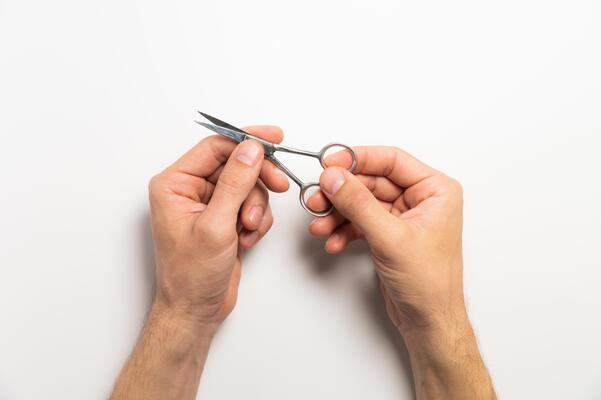Understanding Nail Pullers: A Comprehensive Guide
Nail pullers are essential tools for anyone involved in construction, carpentry, or DIY projects. These versatile devices are designed to remove nails efficiently, saving time and effort while minimizing damage to the surrounding material. In this article, we will explore everything you need to know about nail pullers, including their types, features, and usage, as well as tips for choosing the right one for your needs.
Types of Nail Pullers
Claw Hammer Nail Puller
The claw hammer is one of the most commonly used tools for removing nails. It features a curved claw at the back of the hammer head, which is perfect for prying nails out of wood or other surfaces.
Advantages:
- Dual functionality (hammering and nail pulling)
- Widely available and easy to use
Disadvantages:
- Limited effectiveness for deeply embedded nails
- Potential to damage surrounding surfaces
Jaws-Based Nail Puller (Nail Pliers)
Jaws-based nail pullers are designed with a gripping mechanism that can securely hold the nail for easy removal. These tools are especially effective for headless or bent nails.
Advantages:
- Great for removing headless nails
- Minimal damage to surrounding surfaces
Disadvantages:
- May require more effort for larger nails
- Limited to specific nail types
Traditional Nail Puller
This classic tool has a straight or curved body with a sharp tip designed to wedge under nails and pry them out. Traditional nail pullers are often used for heavy-duty tasks.
Advantages:
- Suitable for large nails
- Durable and robust design
Disadvantages:
- Requires significant manual effort
- May leave marks on the material
Pneumatic Nail Puller
Pneumatic nail pullers use air pressure to remove nails, making them ideal for professionals handling large-scale projects.
Advantages:
- High efficiency and speed
- Suitable for heavy-duty applications
Disadvantages:
- Requires an air compressor
- Higher initial cost
Top Nail Pullers in 2025
1. Crescent 56 Nail Puller
- Features a durable construction and ergonomic design.
- Suitable for both small and large nails.
- Popular for its reliability and ease of use.
2. Estwing DEP12 Nail Puller
- Known for its precision and lightweight build.
- Offers excellent leverage for tough nails.
- Preferred by professionals and DIY enthusiasts alike.
3. Stiletto TICLW12 Clawbar Titanium Nail Puller
- Made from lightweight titanium for portability.
- Ideal for removing nails without damaging the surface.
- Features a compact design for tight spaces.
4. Bates Nail Puller
- Affordable and highly effective.
- Perfect for household projects and occasional use.
- Comes with a comfortable grip for extended use.
5. ValueMax Nail Puller Tool Set
- Includes multiple tools for various nail sizes.
- Offers versatility and durability.
- Great value for the price.
How to Choose the Right Nail Puller
Selecting the right nail puller depends on several factors. Here are some key considerations:
- Type of Project: Determine whether you need a tool for heavy-duty construction or light DIY tasks.
- Nail Size and Type: Match the puller to the nails you will be working with.
- Material and Build Quality: Opt for durable materials like steel or titanium.
- Ergonomics: Choose a tool with a comfortable grip and good leverage.
- Budget: Consider your budget while balancing quality and features.
Proper Use and Safety Tips
Using a nail puller correctly ensures efficiency and safety. Follow these steps:
- Assess the Nail: Identify the type and size of the nail you need to remove.
- Position the Tool: Place the puller under the nail head or grip the nail firmly.
- Apply Leverage: Use steady force to pry the nail out without jerking.
- Check the Surface: Inspect for any damage and repair as needed.
Safety Tips:
- Wear gloves to protect your hands.
- Use eye protection to shield against flying debris.
- Ensure a stable working surface to avoid accidents.
Maintenance and Care for Nail Pullers
Proper maintenance extends the life of your tool. Here are some tips:
- Cleaning: Wipe the tool after each use to remove dirt and debris.
- Storage: Keep the puller in a dry place to prevent rust.
- Sharpening: Sharpen the edges as needed for optimal performance.
- Inspection: Regularly check for wear and tear to ensure safety.
Frequently Asked Questions (FAQs)
1. What is the best nail puller for removing headless nails? Jaws-based nail pullers are ideal for headless nails due to their strong gripping mechanism.
2. Can nail pullers damage the wood surface? Yes, some pullers may leave marks, especially traditional ones. Using protective layers can minimize damage.
3. How do I remove a deeply embedded nail? A traditional or pneumatic nail puller is best for deeply embedded nails. Apply steady force to avoid breaking the nail.
4. Are pneumatic nail pullers suitable for home use? While effective, they are more suited for professional projects due to their cost and setup requirements.
5. How often should I replace my nail puller? Replace the tool when it shows signs of significant wear, such as dull edges or compromised structural integrity.
Conclusion
Nail pullers are indispensable tools for anyone working with nails, whether in construction, carpentry, or DIY projects. By understanding the different types, their uses, and maintenance requirements, you can make an informed choice and ensure the success of your tasks. Invest in a high-quality nail puller to save time, effort, and frustration on your next project.

